“Which plants changed Minnesota and transformed how we live today?“
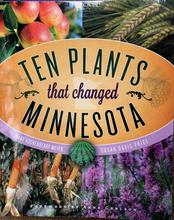
That was the big question behind the public education campaign led by the University of Minnesota Landscape Arboretum. U of M Horticulture professor Mary Meyer spearheaded the initiative, partnering with the Arboretum, the College of Food, Agricultural and Natural Resource Sciences (CFANS) and U of M Extension.
After considering more than 100 different plants nominated by the public from early February through April 15, 2012, a panel of experts* met to determine the final top ten. Plants were judged by their impact – both positive and negative – in six areas: environmental; economic or industrial; cultural/spiritual; historical; sustenance; and landscape. The educational program developed a book and teachers guide to these 10 Plants along with other materials that are listed in this website.
Drum roll! Without further ado, the top ten plants that changed Minnesota are:
- Alfalfa
- American Elm
- Apple
- Corn
- Purple Loosestrife
- Soybeans
- Turf and Lawn Grass
- Wheat
- White pine
- Wild rice
The judges and the public were in agreement on seven of the plants: apple, alfalfa, corn, soybeans, wheat, white pine and wild rice. But the committee concluded that American elm, turfgrass, and purple loosestrife also have played a major role in the landscape of the state. Plants that didn’t make the list but that received a lot of discussion were buckthorn, Eurasian milfoil, hosta, grapes, potatoes and sugar beets.
The 10 Plants that changed Minnesota:
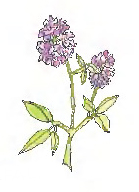
Alfalfa: Only with winter hardy alfalfa could dairies be profitable in Minnesota. Wendelin Grimm, a German immigrant, selected winter survivors from his alfalfa fields and developed Grimm alfalfa in the 1860s. As of 2016, Minnesota ranked 6th in the nation in milk cows, and 8th in milk production. Alfalfa is a favorite of honeybees, and like all legumes, it adds nitrogen to the soil.
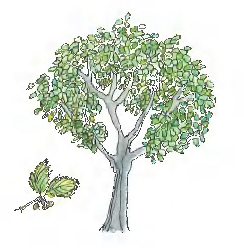
American elm: Though ravaged by Dutch elm disease, this beautiful shade tree, native throughout the state, still graces many streets and landscapes today. Tolerant of city conditions and the robust Minnesota climate of hot summers and cold winters, the American elm is a survivor. Genetics and breeding have given new hope for Dutch elm disease-resistant selections for urban and suburban sites. Elms support more than 200 species of Lepidoptera, or butterflies and moths.
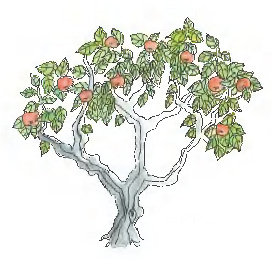
Apples: Challenged in 1860 by Horace Greeley’s statement that “I would not live in Minnesota because you can’t grow apples there!” Peter Gideon introduced the Wealthy apple in 1868. It was followed in 1922 by the Haralson, and subsequently 26 U of M introductions, including the Honeycrisp in 1991, the Zestar!® in 1996, and SweeTango® in 2009, Rave®, First Kiss® and TriumphTM coming in 2023. Honeycrisp was recognized as one of the top 25 innovations of the decade in 2005 by TIME magazine. Millions of Honeycrisp trees have been planted worldwide, and in 2006, Honeycrisp became Minnesota’s state fruit.
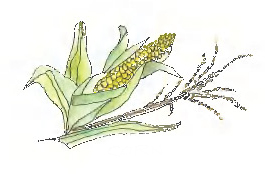
Corn: Corn covers 7 to 8 million acres in Minnesota, making the state fourth in U.S. production in 2020. Yields have changed from 39 bushels/acre in 1959 to sometimes 200 bushels/acre in 2020, due to changes in planting and cold-hardy varieties produced especially for Minnesota. U of M introductions account for nearly 200 hybrids. In 1992, TIME magazine designated hybrid seed corn as one of the most significant events that shaped our world during the past 1,000 years. Corn has more than 3,500 uses in commercial and industrial products and manufacturing processes.
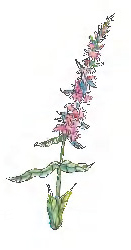
Purple loosestrife: Originally planted as an ornamental garden plant, purple loosestrife is the poster child of invasive plants. It has taught us how significantly a plant can transform the valued wetlands and waterways in Minnesota. Careful management with biological and chemical controls, along with education, and cooperative measures learned from purple loosestrife should help us deal with other invasive plants in the future.
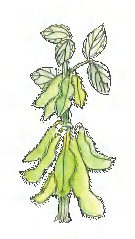
Soybeans: Valued at $3 billion annually, soybeans cover 7-8 million acres in Minnesota. Originally grown as forage, the seed and oil crop was developed by researchers at the U of M. Soybeans are an excellent source of protein: Each seed is 40 percent protein, compared with 25 percent for other legumes, and 12 percent for other cereal grains. Soybeans’ uses range from livestock food for poultry and Minnesota’s 49 million turkeys, to baby formula, adhesives, oil products and more. Minnesota was third in U.S. soybean production in 2020.
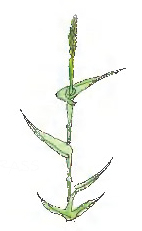
Turf and Lawn Grass: From a sea of prairie grass to a sea of green carpet, turf and lawn grasses – predominately Kentucky bluegrass – have transformed Minnesota’s landscape. Valued for recreation, erosion control, and preventing pollutant runoff from entering Minnesota’s waterways, grass cools and covers countless acres in Minnesota. Only through best management practices can turf benefits offset the inputs that can harm the environment. Turfgrass contributes $8 billion to the state’s economy in retail and wholesale sales of sod, seed, and related equipment for homeowners, as well as recreational sports uses.
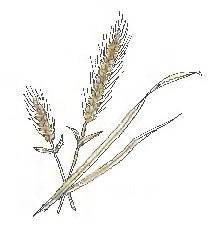
Wheat: Wheat was the first large monocultural grain crop in Minnesota. As early as 1879, 72,000 bushels of Minnesota wheat were exported to Spain. Wheat built Minneapolis, Minnesota’s industrial “Mill City,” which today does more than $200 billion of food and agricultural related business annually. In 2020, Minnesota ranked third in U.S. spring wheat production, and 8th in overall wheat production.
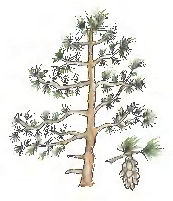
White pine: White pine forests once covered more than 3.5 million acres in Minnesota, but today cover less than 100,000. Prized for its strong, straight trunks, white pine built the cities of the Midwest and provided lumber for the ships of England as early as the 1600s. Today more than one million white pine seedlings are planted annually in Minnesota. On average, more than 30 white pine trees are planted for every tree harvested.
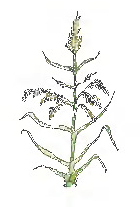
Wild rice: A staple food of the Ojibwe for centuries, the location of wild rice determined early human settlement in Minnesota. Minnesota today produces more than half of the world’s hand-harvested wild rice and is second in the nation in the production of cultivated wild rice. Native to lakes and wet areas, wild rice was named Minnesota’s state grain in 1977 for its cultural and economic significance.
*Special thanks to the 10 Plants judging committee that waded through the nearly 500 entries: Alan Ek, Forest Resources; Al Withers, Minnesota Ag in the Classroom; Bev Durgan, Dean of U of M Extension; Bob Quist, Oliver Kelly Farm/ MN Historical Society; Brian Buhr, Ag Economics; Karen Kaler of the U President’s Office; Mary Maguire Lerman, Minnesota State Horticultural Society; Nancy Jo Ehlke, Agronomy and Pl Breeding; Susan Bachman West, Bachman’s Inc.; Gary Gardner, Horticultural Science; Neil Anderson, Horticultural Science; Karl Foord, Extension Educator; and Mary Meyer, Horticultural Science.
Click on the link in the menu bar on the home page to learn more about each of the Top 10 Plants that changed Minnesota.
Special thanks for use of the Plant illustrations by artist Cathy Gilchrist. Images may be subject to copyright.
Text for this website was written by Susan Davis Price, author and garden historian.